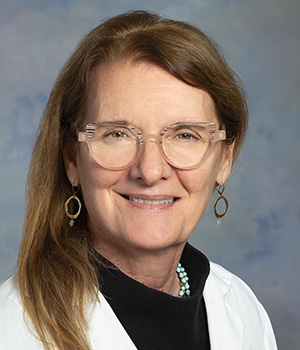Mammograms Help Save Lives
Carol Brooks can attest to this: Mammograms help save lives. The Overland Park, Kan., resident has a family history—her mother and cousin had breast cancer—so she’s diligent about annual mammograms. A routine exam in 2006 revealed a precancerous mass, and Brooks underwent a biopsy and lumpectomy at Saint Luke’s South Hospital.
“I felt very fortunate,” recalls Brooks, “because the pathology report showed that the cells were atypical. So I thought I was in the clear.”
Imagine her shock when she faced the exact scenario again this year—although the news wasn’t as good.
During Brooks’ annual mammogram at Saint Luke’s South’s Goppert Breast Center, doctors found two suspicious masses. Tammy Neblock, M.D., performed a lumpectomy on Jan. 3. This time, the masses were malignant.
“When she told me, it was a complete shock,” recalls Brooks. “But after the idea of having breast cancer sunk in, I just made up my mind that all I could do was fight it.”
Her treatment options: radiation or a mastectomy. After watching her husband suffer from a rare cancer and die in 1994, Brooks chose to eliminate her risk.
She underwent a double mastectomy on Feb. 29 and will have reconstructive plastic surgery this summer. She credits Saint Luke’s doctors and staff for making her experience a little less daunting.
“Everybody at Goppert is so caring and helpful—they want to do what they can to get you through this unfortunate episode in your life,” she said.
A guiding hand
Saint Luke’s South’s Goppert Breast Center offers convenient, state-of-the-art comprehensive breast health care.
“We have everything a patient could need right here,” notes nurse navigator Karen Rogers, R.N., A.R.N.P. “With comprehensive services, patients don’t have to travel to multiple facilities.”
Working with Saint Luke’s Cancer Institute at Saint Luke’s Hospital of Kansas City, Saint Luke’s South’s Goppert Center features a multidisciplinary medical team of radiologists, pathologists, surgeons, and radiation and medical oncologists.
They specialize in the latest state-of the- art imaging, surgical, and diagnostic techniques, including:
- 3-D digital mammography, high-resolution ultrasound,
- and guided biopsy
- CAD (computer-aided detection)
- Noninvasive stereotactic biopsy, using a computer-guided imaging system with vacuum-assisted needles
- Minimally invasive surgery
- Rapid lab analysis for biopsies
- Pretreatment planning
- Breast cancer support services, including counseling
Educating patients about breast health is key, Rogers said. The Center teams with board-certified genetic counselors to evaluate patients’ family history and identify genetic risk factors.
It also offers classes to prepare newly diagnosed breast cancer patients and their families for what lies ahead. Class topics range from choosing prosthetics and changing your eating habits to talking about your feelings.
Perhaps most important, the Center’s nurse navigator program provides an advocate to help each patient schedule appointments, understand insurance issues, and find emotional support.
“We help them maneuver through the cancer treatment process,” said Rogers. “We make sure they have information from credible sources and answer any questions they might have.
“It’s scary when you’re first diagnosed with cancer. Patients are comforted knowing there’s a go-to person they can call for help.”
A new appreciation
Phyllis McKinney of Overland Park learned this firsthand. She retired in 2002 after 23 years as a Saint Luke’s surgical nurse. In January, she had her annual mammogram at Saint Luke’s South’s Goppert Center and radiologist Robin MacDonald, M.D. noticed a suspicious area. He performed a stereotactic biopsy, a noninvasive procedure that uses a computer-guided imaging system with vacuum-assisted needles to extract tissue.
Dr. MacDonald found “ductal carcinoma in situ,” or cancer cells within the breast’s milk ducts that haven’t spread into surrounding tissue. It’s the most common type of noninvasive breast cancer in women.
Surgeon John Shook, M.D., performed a lumpectomy on McKinney.
“I was a surgical nurse and didn’t have a lot of experience with breast cancer,” she said. “I was just like a regular patient and learned as I went along.” A nurse navigator helped her schedule appointments while she was out of town. And the class for newly diagnosed patients alleviated some of the fears she and her husband, Stan, felt.
“The more you know, the better you are and less fear you have,” said McKinney. “My care and caregivers were great, and it gave me a whole new appreciation for Saint Luke’s.”
Related Content

